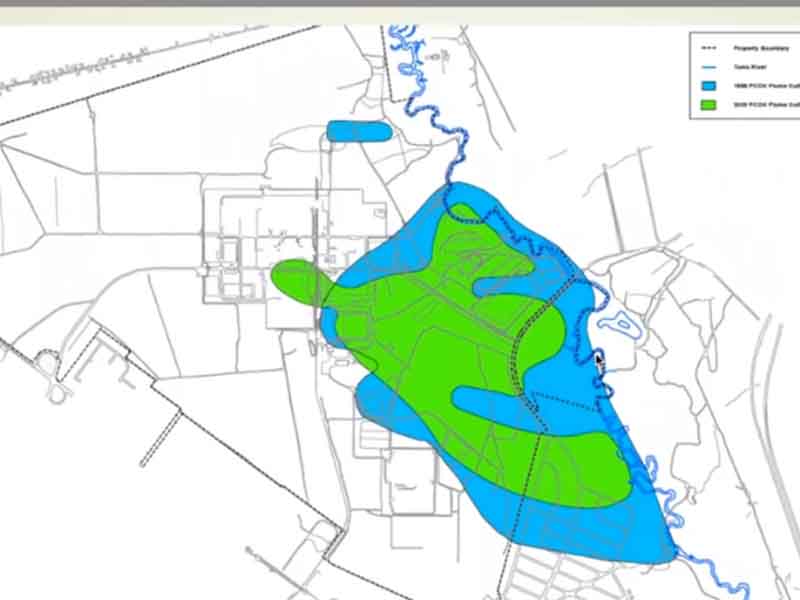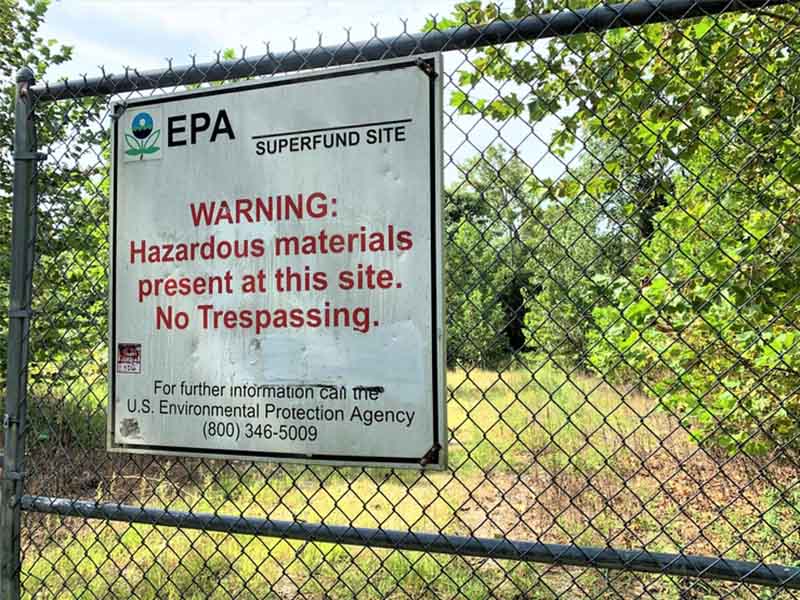Toms River, NJ – Toxic waste from decades ago continues polluting water tables in Toms River according to EPA Remedial Project Manager Diane Salkie.
Salkie, in a recent meeting, showed the size of the toxic plume that is continuing to contaminate drinking water in the Cohansey Aquifer, which once supplied drinking water to thousands of homes in the region.
“It is still under the communities, which is why we don’t allow anyone to drink the water,” Salkie said. “There is still contamination which is why we don’t want new wells put in.”
She said the good news is, that toxic vapors are no longer coming up through basements in nearby homes.
“It is still underneath communities,” she said. “It has gotten smaller, but it’s a slow process. Groundwater contamination is difficult, you can’t just remove it like topsoil, it takes time.”

The EPA does not know when, or if the groundwater will be clean, but Salkie said the process could take 30 years.
The toxins below the ground are mostly bi-products of the BASF chemical manufacturing products including dioxins, trichlorophenol, DDT, chlorobenzene, pyrene, mercury, PCB and about a dozen others.
Salkie said the EPA has been pumping the contaminated water out of the ground before releasing it back into the water system. The treated water is being discharged into woodlands just a few hundred feet from the Toms River, and Salkie said the EPA tests that water before it is released.
“It’s not directly into the Toms River, but it eventually ends up in the Toms River,” she said.
Salkie was questioned about the process by Britta Forsberg of Save Barnegat Bay.
BASF purchased Ciba-Geigy for their patents, worth millions of dollars, but in that purchase, they also bought the liability of the project.
Toms River Councilman Dan Rodrick said the company also plans to build houses and businesses on 250 acres of the 1,200-acre site. Rodrick opposes any development projects on the Ciba-Geigy property.
When asked when the project will be fully remediated, Salkie did not have an answer.
“If we can remediate the contamination to a level where it’s low, that’s our end goal,” she said. “We’re not there yet, we still have contamination in the groundwater.”

